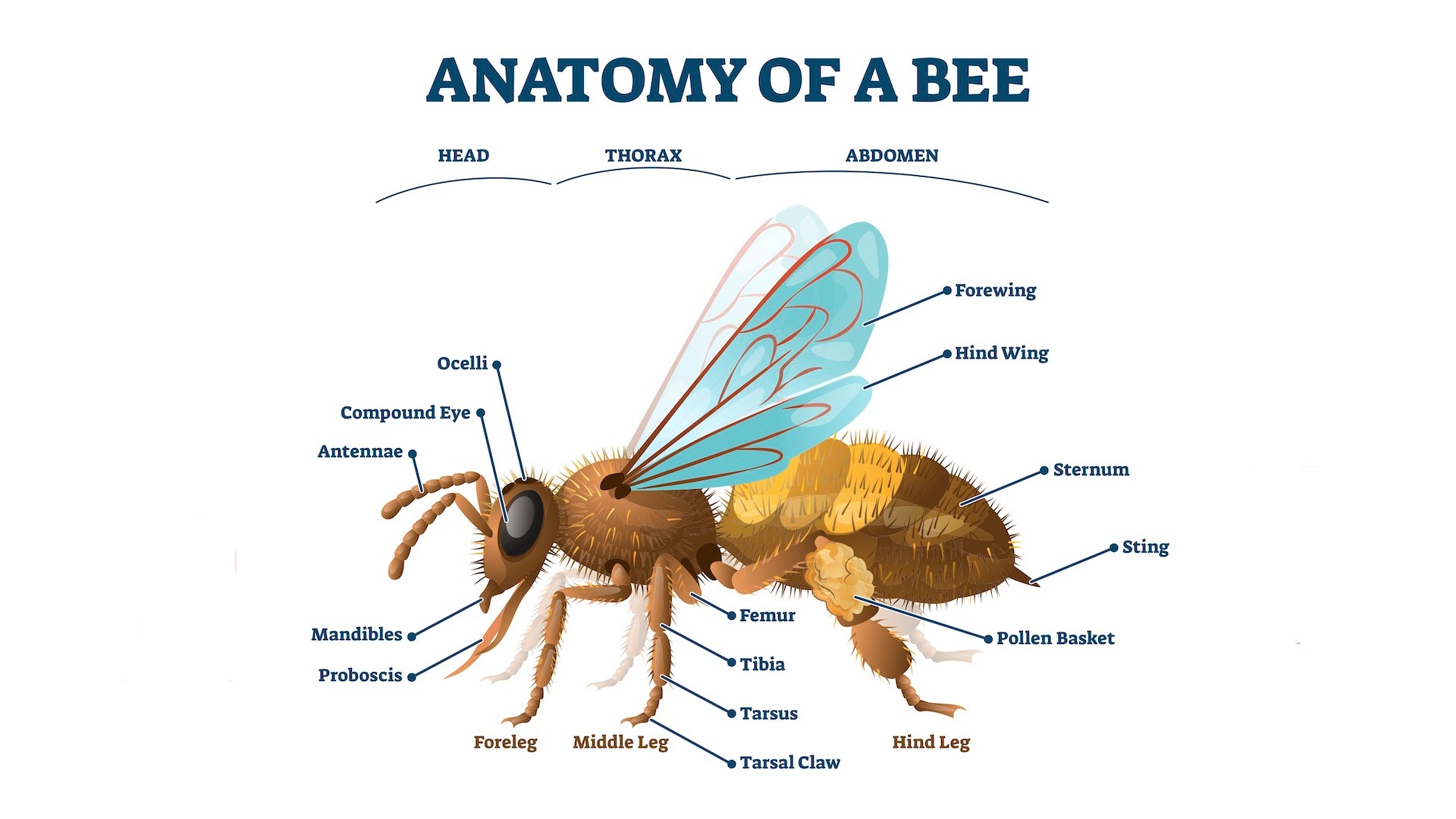
Do bees have knees?
Bees do have a femur and a tibia, but do they have a kneecap like ours?

If anyone has ever called you "the bee's knees," take it as a compliment! The phrase dates back to the 1920s and describes a "highly admired person or thing," according to the Merriam-Webster dictionary.
But have you ever really stopped to imagine a bee with knees? Do bees — and other insects, for that matter — even have knees?
First, let's consider the knee we know best: our own. The human knee is a complicated structure. It includes three bones: the femur (thigh bone), tibia (shin bone) and patella (kneecap). But it's not just bones. An assortment of cartilage, ligaments and tendons, with the help of lubricants, all work in sync to help you straighten and bend your leg at the knee. Many other animals — such as birds, mammals and some reptiles — also have knees with kneecaps.

Related: What's the largest bone in the human body? (What about the smallest?)
Bees and their fellow insects, on the other hand, do not have bones in the sense that other animals do. Unlike vertebrates, which have hard skeletons that hold up their squishy outsides, bees and other insects are the opposite: A bee's skeleton, or exoskeleton, is on the outside. The exoskeleton, made of a tough material called chitin, protects its internal softer parts.
But similarly to the legs of humans and other legged animals, bees' legs are made up of distinct segments. According to Ramesh Sagili, a bee researcher at Oregon State University, bee legs are divided into five parts; starting closest to the body, they are the coxa, trochanter, femur, tibia and tarsus.
In between the femur and the tibia, is there a knee like ours? The answer is no, according to Sagili.
Sign up for the Live Science daily newsletter now
Get the world’s most fascinating discoveries delivered straight to your inbox.
"There will be a chitin joint [between] each of these segments," Sagili told Live Science. "Bees have six segments on the leg, and they are all joined together."
Rather than a jumble of tendons, ligaments and a kneecap, bees have a simple ball-and-socket joint between their leg segments, Sagili said. Those joints help bees move their legs, groom themselves, dislodge pollen or dance to show their hive-mates where to find nectar-filled flowers.
In the early 20th century, before its evolution into a compliment, people used the phrase 'the bee's knees' to describe something that doesn't exist — and they were right. So, while bees don't have the same knees we do, they still have a joint between their tibia and femur that allows them some flexibility.

JoAnna Wendel is a freelance science writer living in Portland, Oregon. She mainly covers Earth and planetary science but also loves the ocean, invertebrates, lichen and moss. JoAnna's work has appeared in Eos, Smithsonian Magazine, Knowable Magazine, Popular Science and more. JoAnna is also a science cartoonist and has published comics with Gizmodo, NASA, Science News for Students and more. She graduated from the University of Oregon with a degree in general sciences because she couldn't decide on her favorite area of science. In her spare time, JoAnna likes to hike, read, paint, do crossword puzzles and hang out with her cat, Pancake.









